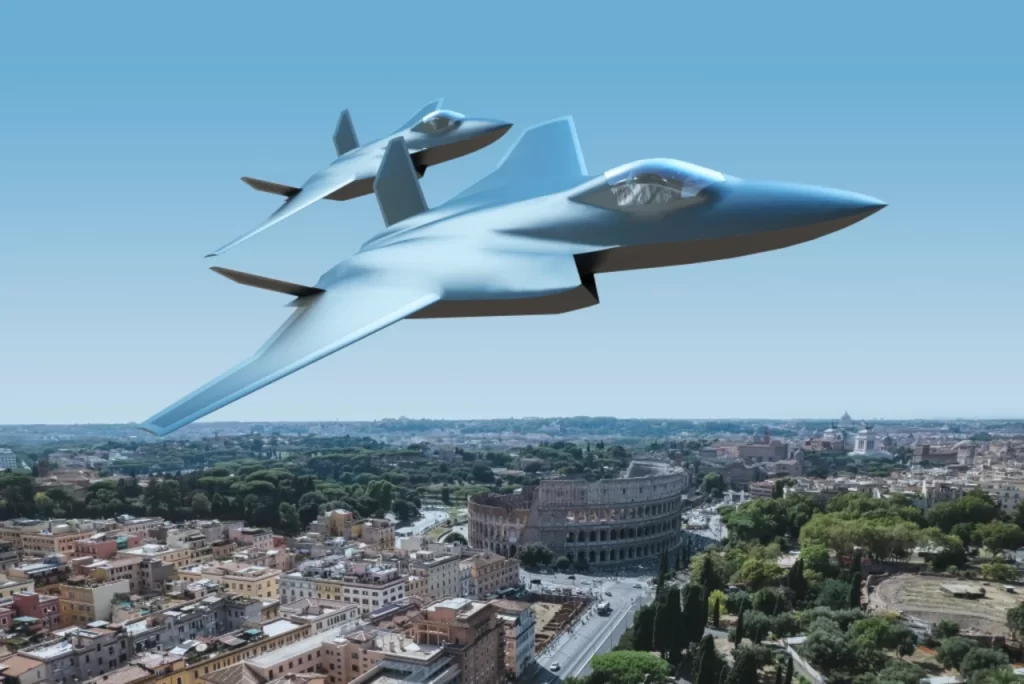On December 9, 2022, the prime ministers of Great Britain, Italy and Japan issued a joint statement announcing the joint Global Combat Air Program (GCAP) to create a new generation of fighter aircraft by 2035.
The Global Combat Air Program (GCAP) fighter is the outcome of the combination of previous Tempest and FX programme development. The definition of the new platform should emerge in 2025, with entry into service occurring in 2035. In export markets, it will naturally compete with the European FCAS.
The outlines of this significant arrangement were first outlined at the July Farnborough Air Show, but it is now official. The British Tempest and Japanese FX programmes will merge to form the Global Combat Air Program (GCAP), a name indicating the more globalised nature of the future “sixth generation” fighter, which is expected to replace the first Eurofighter Typhoon of the Royal Air Force (RAF) and Aeronautica Militare, as well as the Mitsubishi F-2 of the Japanese Air Self-Defense Force (JASDF).
Certainty dictates that the GCAP has become an ambitious programme comparable to the SCAF (Future Air Combat System) in Europe, both in terms of the means that will be deployed and the targeted replacement market, not to mention future export sales opportunities. Five years later, in 2040, the SCAF programme seeks to replace the first Rafale (France) and Eurofighter (Germany and Spain).

The rapprochement of the United Kingdom, Japan, and Italy in the GCAP programme was announced on December 9 by British Prime Minister Rishi Sunak at the headquarters of the RAF Eurofighter Typhoon force at Coningsby air base, along with statements from the leaders and manufacturers of the three countries, including of course BAE Systems and Mitsubishi Heavy Industries (MHI).
Now, the partners will intensify their collaboration to define the concept of the fundamental platform, and in 2025 they will commence the development phase of the future fighter. By that time, the three countries participating in the Global Combat Air Program will have accurately specified the division of industrial duties based on a common cost and budget evaluation. Parallel to the construction of future combat aircraft with Italy and Japan, the United Kingdom stipulates that it will assess additional capabilities for its own requirements, particularly in terms of weaponry and sensors.
On the engine side of the Global Combat Air Programme, Alex Zino, director of business development and future programmes for Rolls-defence Royce’s division, pointed out that the three countries had already collaborated to design, manufacture, and test an engine demonstration at the end of last year.
Lastly, the United Kingdom, Japan, and Italy are opening the door for other nations to participate in the programme or work on larger capabilities, thereby increasing the likelihood of future exports of combat aircraft.
For Ben Wallace, British Secretary of State for Defence, the GCAP will be part of the “defence cooperation with international allies, in particular the AUKUS partnership and NATO, of which the United Kingdom remains the main European contributor”.
Italy joined the United Kingdom-led Tempest programme in September 2019, with Leonardo, Elettronica, Avio Aero, and MBDA Italy effectively participating. Last July, rumours of a merger between the Tempest and the FX programme were especially prevalent, with a deal expected to be accomplished by the end of the year.
Leonardo UK and Mitsubishi Electric announced at Farnborough that they were already working on the JAGUAR (Japan and Great Britain Universal RF system) radar demonstrator, a sensor that will contribute to the Tempest’s sixth-generation radar, the MRFS (Multi-Function RF System), and thus should eventually be incorporated into the Global Combat Air Program.
Japan’s accession to the GCAP program puts an end to Japanese projects to develop their own futuristic fighter, which was supposed to be created with American assistance. In this regard, it is significant that the defence ministries of Japan and the US issued a joint statement that “the United States supports Japan’s security and defence cooperation with allies and like-minded partners, including the United Kingdom and Italy, two close partners both of our countries in the development of its advanced fighter” and that the US and Japan together began an important collaboration through a series of discussions about the capabilities of autonomous systems that could complement the Japanese fighter program among other platforms.
The absence of Sweden in the GCAP program is also noteworthy, although, in July 2019 and December 2020, the Swedish Ministry of Defense signed memorandums of understanding on joining the Future Combat Air System Cooperation (FCASC) program to jointly develop a promising new generation fighter based on the British Tempest fighter project. However, in 2022, the management of the Swedish group Saab AB complained that the group’s participation in the development of Tempest had no development and was practically “frozen”.
